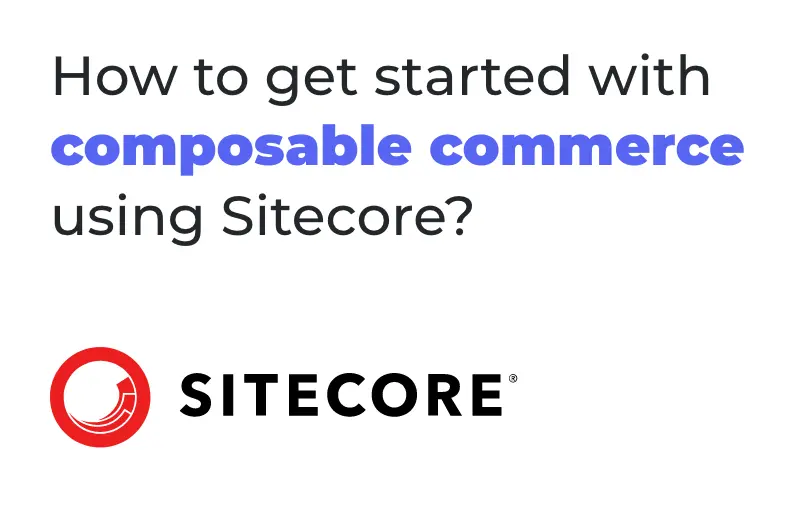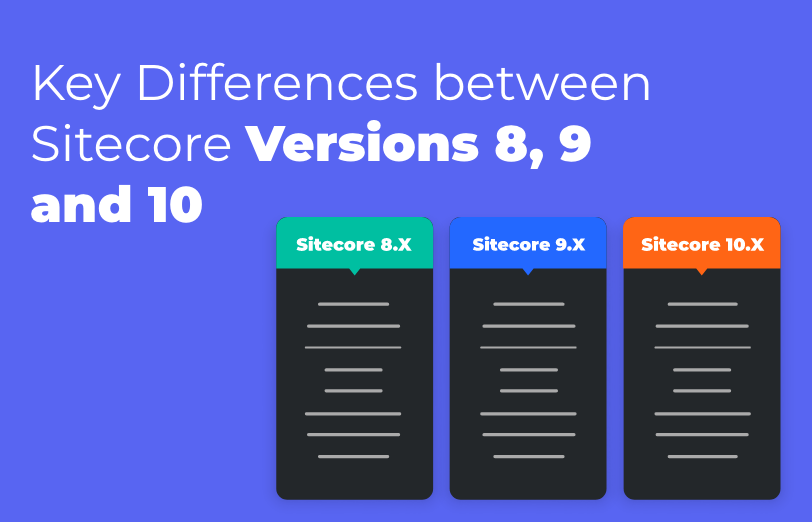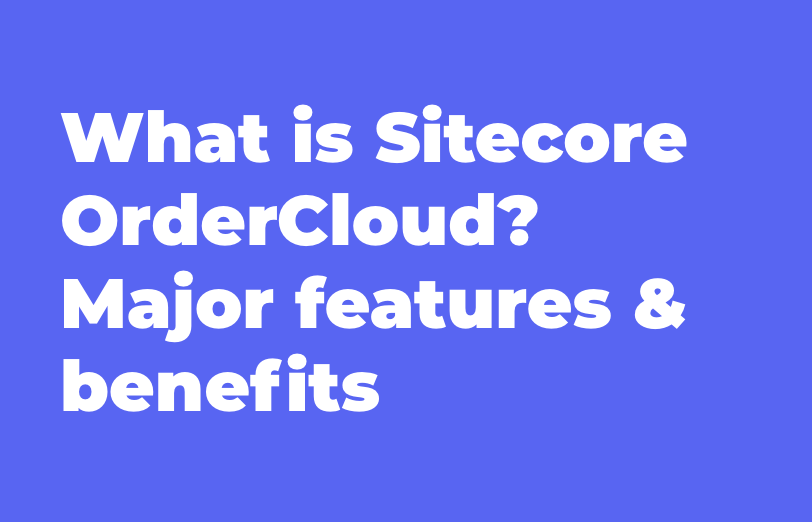Need An Accurate Estimate For Your Sitecore XM Cloud Migration Project? Kickstart Your Journey Here!
Get My EstimateThrough this blog, you will understand more about what composable commerce is, how MACH architecture enables such platforms, how to get started with it and how you can unlock the power of composable commerce using a 5-step guide.
In today’s digital landscape that is rapidly evolving, ecommerce businesses have to constantly seek new ways for staying ahead of the competition and providing enhanced, unique customer experiences. The answer to this is Composable Commerce that offers flexibility, scalability and helps your brand deliver exceptional digital commerce experiences.
Composable commerce, which is gaining traction in the e-commerce industry, provides businesses with the ability to create a personalized and adaptable e-commerce ecosystem.
It means choosing the best-of-the-breed commerce components or combining them all into an application that is custom-made and tailored specific to the requirements, needs, and objectives of your business.
It is based on the idea that a commerce platform should not be a rigid, one-size-fits-all solution, but rather a collection of interchangeable, specialized components or microservices that can be assembled to create a unique and tailored e-commerce ecosystem.
Composable commerce offers several key advantages:
- Flexibility
- Personalization
- Scalability
- Speed
Packaged Business Capabilities (PBC) plays a key role in this. Each PBC is a feature or a functionality and typically a third-party software component
By going for MACH architecture, your ecommerce business can have the building blocks for taking advantage of the composable commerce approach. Here is how:
Microservices: It makes it possible for packaged business capabilities to be composable.
API-first: An API-first approach enables a composable approach to ecommerce development by bringing together two services or two applications.
Cloud-native: When you leverage the full capabilities of the cloud, your application will become flexible, scalable, and allow your business to avoid upgrades.
Headless: This separates the front-end from the backend. When both the layers are decoupled, it is possible to continuously improve the customer interface and extend other different touchpoints effortlessly.
Why go for Composable Commerce? It will replace your platform with the best solutions, enhance your customer experience, stay ahead of competitors, boast team agility, get faster performing websites, and lower the total cost of ownership.
Step 1 - Define business transformation goals
You need to define your business transformation goals very clearly first. You have to ensure that the objectives you have set align with the broader business strategy that you set. Make sure that it is not merely technology driven.
Step 2 - Map your customer journey
Break down the customer journey into phases and focus on the key touchpoints. Identifying touchpoints is crucial to understanding how composable commerce can make the most significant impact and where. It will help you get a direction on where to focus your omnichannel efforts.
Step 3 - Define necessary components
With each phase of the customer journey, identify components within it and tasks that need primary attention. These components can be representing specific functionalities such as search, suggestions, categories, landing pages of product, etc.
Step 4 - Prioritize phases and components
Build cross-functional teams that are comprised of multiple areas and assign them specific phases and corresponding components.
Step 5 - Launch your first win
Select low-risk components within the journey to test the implementation approach you have. This way you can gather insights before you commit to any broader changes. Analyze and improve through it.
Composable commerce through Sitecore
Sitecore is known for its CMS, personalization, and dynamic digital experience capabilities. However, Sitecore can also serve as an ideal platform for building composable commerce solutions.
While adopting a composable commerce approach with Sitecore offers numerous benefits, it's essential to consider integration complexity, security, TCO, training, testing, monitoring, and performance optimization to ensure a successful implementation.
As the e-commerce landscape continues to evolve, businesses that embrace composable commerce with a platform like Sitecore will be well-positioned to meet the ever-changing needs and expectations of their customers, ultimately driving growth and success in the digital marketplace.
Composable commerce offers a fresh and innovative perspective to the e-commerce landscape, and it allows businesses to create highly personalized, adaptable, and scalable online experiences for their customers. Sitecore, with its robust content management and commerce capabilities, provides a solid foundation for implementing a composable commerce solution.
If you want to get started with composable commerce with Sitecore, first assess your current e-commerce ecosystem, identify the specific components you need, and leverage Sitecore's integration capabilities to connect these components seamlessly.
Furthermore, you can also use Sitecore’s personalization, mobile optimization, and SEO features to create a tailored and effective e-commerce experience.
You can also go for Sitecore OrderCloud for your ecommerce business needs, for building dynamic ecommerce platforms, and for creating unique customer experiences.
Want to improve your Sitecore platform? Get a free audit now!

 About Us
About Us
 Careers
Hiring
Careers
Hiring
 Our Story
Our Story
 Let’s talk
Let’s talk














